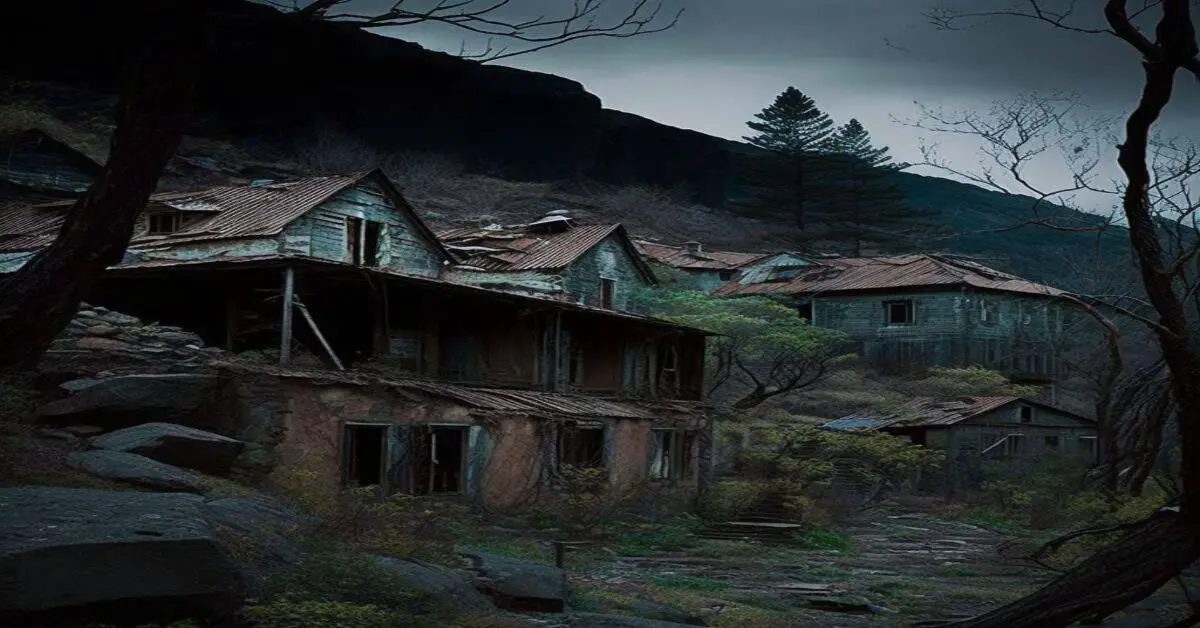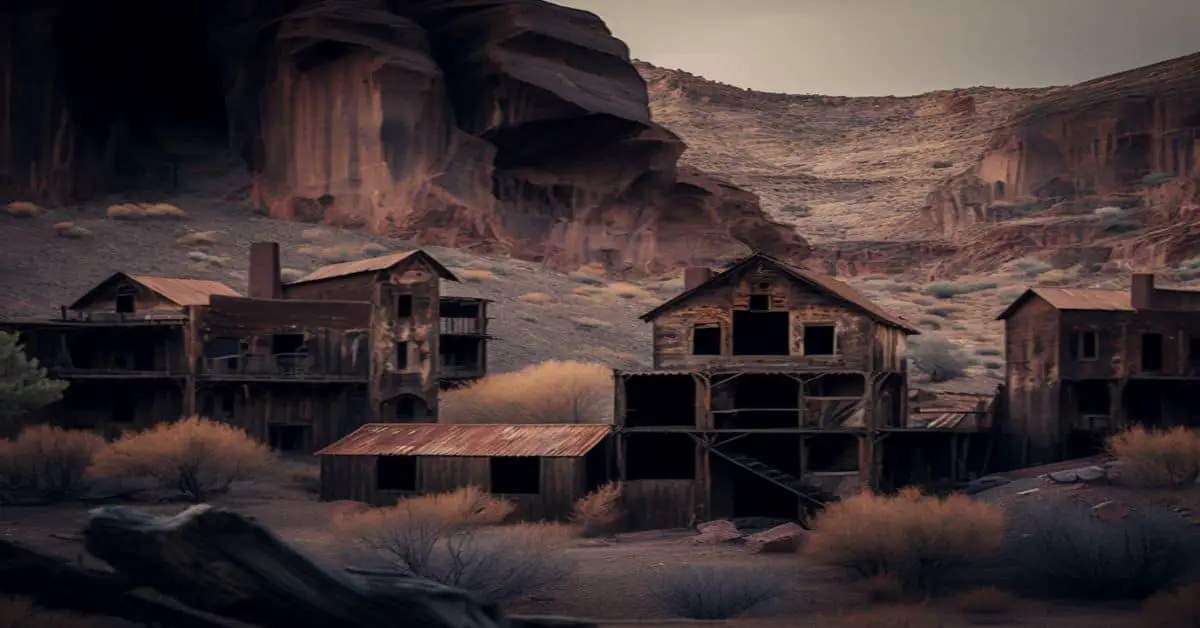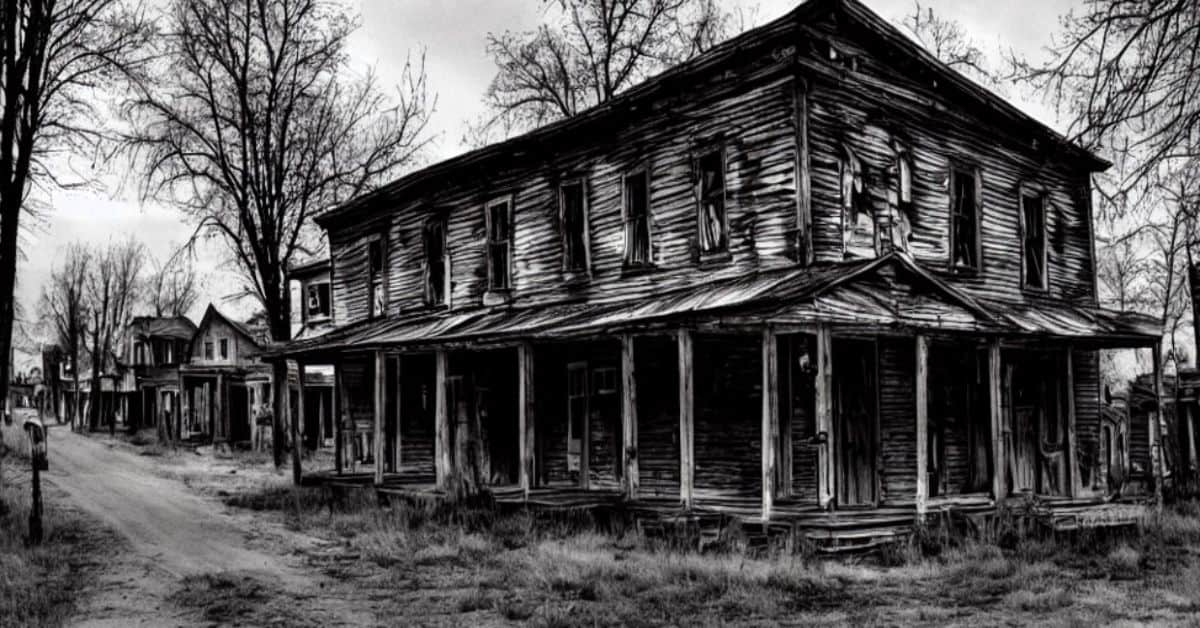Butler, TN
County:
Zip Code:
Latitude / Longitude:
Elevation:
Time Zone: Eastern (EST) (UTC-5)
Established:
Disestablished:
Comments:
Remains:
Current Status:
Remarks:
Cades Cove, TN
County:
Zip Code:
Latitude / Longitude: 35° 35′ 39 N, 83° 50′ 31 W
Elevation:
Time Zone: Eastern (EST) (UTC-5)
Established: 1797
Disestablished:
Comments: Cades Cove is an isolated valley located in the Tennessee section of the Great Smoky Mountains National Park, USA. The valley was home to numerous settlers before the formation of the national park. Today Cades Cove, the single most popular destination for visitors to the park, attracts more than two million visitors a year because of its well-preserved homesteads, scenic mountain views, and abundant display of wildlife. The Cades Cove Historic District is listed on the National Register of Historic Places.
Remains: The National Park Service currently maintains several buildings in Cades Cove that are representative of pioneer life in the 19th-century Appalachia. By the time the cove was incorporated into the park, most residents lived in relatively modern frame houses, rather than the log cabins that predominate among the buildings preserved in the cove.
Current Status: Geologically, Cades Cove is a type of valley known as a “limestone window”, created by erosion that removed the older Precambrian sandstone, exposing the younger Paleozoic limestone beneath. More weathering-resistant formations, such as the Cades sandstone which underlies Rich Mountain to the north, and the Elkmont and Thunderhead sandstones which form the Smokies crest to the south surround the cove, leaving it relatively isolated within the Smokies. As with neighboring limestone windows such as Tuckaleechee to the north and Wear Cove to the east, the weathering of the limestone produced deep, fertile soil, making Cades Cove attractive to early farmers.
Remarks: Cades Cove has been listed on the National Register of Historic Places as a historic district since July 13, 1977. The historic district is bounded by the 2,000-foot (610 m) elevation contour (that is, it comprises all areas below that elevation) and includes both historic buildings and prehistoric archaeological sites.
Devonia, TN
County: Anderson
Zip Code:
Latitude / Longitude: 36°8′53″N 84°23′8″W / 36.14806°N 84.38556°W / 36.14806 -84.38556
Elevation:
Time Zone: Eastern (EST) (UTC-5)
Established: 1920
Disestablished: 1975
Comments: Devonia was the United States Post Office designation for the former coal mining camp in Anderson County, Tennessee, also known as Moore’s Camp. The Devonia post office, established in 1920, served Moore’s Camp, plus the nearby communities of Rosedale, Fork Mountain, Braytown, and Charley’s Branch, until it closed in 1975.
Remains: Devonia is the site of a coal preparation plant.
Current Status:
Remarks: Tennessee State Route 116 traverses the area and a 42-mile (68 km) railroad line connects the community with Oneida, Tennessee.
Elkmont, TN
County:
Zip Code:
Latitude / Longitude: 35°39′20″N 83°35′4″W / 35.65556°N 83.58444°W / 35.65556
Elevation:
Time Zone: Eastern (EST) (UTC-5)
Established: 1908
Disestablished:
Comments: The Little River Lumber Company established the town of Elkmont in 1908 as a base for its logging operations in the upper Little River and Jakes Creek areas. By 1910, the company began selling plots of land to hunting and fishing enthusiasts from Knoxville, who established the “Appalachian Club” just south of the logging town. In 1912, a resort hotel, the Wonderland Park Hotel, was constructed on a hill overlooking Elkmont. A group of Knoxville businessmen purchased the Wonderland in 1919 and established the “Wonderland Club.” Over the next two decades, the Appalachian Club and Wonderland Club evolved into elite vacation areas where East Tennessee’s wealthy could gather and socialize.
Remains: Elkmont is a region situated in the upper Little River Valley of the Great Smoky Mountains of Sevier County, in the U.S. state of Tennessee. Throughout its history, the valley has been home to a pioneer Appalachian community, a logging town, and a resort community. Today, Elkmont is home to a large campground, ranger station, and historic district maintained by the Great Smoky Mountains National Park.
Current Status: Only two structures remain from the pioneer period in Elkmont— the Avent cabin (constructed c. 1850) and the Levi Trentham cabin (constructed c. 1830). Originally built by the Ownby family, the Avent cabin was sold in 1918 to the family of noted Nashville artist Mayna Avent, who used it as an art studio until 1940. The Levi Trentham cabin was originally located in the upper reaches of Jakes Creek, and moved to the Appalachian Club’s Daisy Town section in 1932 for use as a guest house.
Remarks: Upon the creation of the national park in the 1930s, most of Elkmont’s cottage owners were given lifetime leases. These were converted to 20-year leases in 1952, and renewed in 1972. The National Park Service refused to renew the leases in 1992, and under the park’s general management plan, the hotel and cottages were to be removed. In 1994, however, the Wonderland Hotel and several dozen of the Elkmont cottages were listed on the National Register of Historic Places as Elkmont Historic District, Great Smoky Mountains National Park, sparking a 15-year debate over the fate of the historic structures. In 2009, the National Park Service announced plans to restore the Appalachian Clubhouse and 18 cottages and outbuildings in the Appalachian Club area (which were older and more historically significant) and remove all other structures, including the Wonderland Annex (the main hotel had collapsed in 2005).
Fork Mountain, TN
County: Anderson
Zip Code:
Latitude / Longitude: 36°07′36″N 84°25′12″W / 36.12667°N 84.42000°W / 36.12667
Elevation:
Time Zone: Eastern (EST) (UTC-5)
Established:
Disestablished:
Comments: Fork Mountain, Tennessee, is a former coal mining camp, located on Tennessee State Route 116 and the New River, at the Morgan County-Anderson County line. Petros is 4.2 miles to the south. Frozen Head State Park is nearby with the park boundary including part of the Morgan County portion of the old town.
Remains: The town was the site of at least six underground mines, a school, a railroad siding, and a sizable population in the early 1950s, but by 1980 these had all been dismantled as were most of the homes in the town.
Current Status: Fork Mountain was served by the Devonia post office, which was established in 1920 and closed in 1975.
Remarks: Fork Mountain is also the birthplace of Ohio State Senator Bill Harris.
Hopewell, TN
County: Cannon
Zip Code:
Latitude / Longitude: 35°42′50″ N 86°10′20″ W
Elevation: 784 feet (239 m)
Time Zone: Eastern (EST) (UTC-5)
Established:
Disestablished:
Comments: Hopewell was a former unincorporated community in Cannon County, Tennessee, United States.
Remains: The Hopewell Baptist Church, which has held services since 1833, remains standing.
Current Status: However, the area that was formerly Hopewell is currently known as Bradyville.
Remarks:
Jefferson, TN
County:
Zip Code:
Latitude / Longitude:
Elevation:
Time Zone: Eastern (EST) (UTC-5)
Established:
Disestablished:
Comments:
Remains:
Current Status:
Remarks:
Loyston, TN
County: Union
Zip Code:
Latitude / Longitude: 36°15’55 N 83°57’00 W
Elevation:
Time Zone: Eastern (EST) (UTC-5)
Established:
Disestablished:
Comments: Established in the early 19th century around a foundry built by its namesake, John Loy, over subsequent decades the community’s location along State Highway 61 helped it grow into a trading center for local farmers. By the time the Tennessee Valley Authority (TVA) began making plans to build Norris Dam in the early 1930s, Loyston had a population of approximately 70 residents and consisted of a post office and several small businesses.
Remains: Loyston is a ghost town in Union County, Tennessee, United States, that was inundated by the waters of the Clinch River after the completion of Norris Dam in 1936.
Current Status: Loyston is now under a mile-wide section of Norris Lake known as the “Loyston Sea,” located along the shores of Big Ridge State Park.
Remarks: The valley in which Loyston was once located is now submerged under the widest part of Norris Lake, the mile-wide “Loyston Sea.” While building the Norris reservoir, TVA engineers determined that a saddle dam would be necessary to prevent water from the Mill Creek embayment from escaping into the Buffalo Creek Valley (which empties into the Clinch downstream from Norris Dam). This saddle dam, known as the “Loyston Dike,” is located along Highway 61 just west of Big Ridge State Park. A recreation area along the Mill Creek embayment has also been named for Loyston. In 2008, the Museum of Appalachia accepted a donation of a children’s playhouse that originally stood in Loyston and was said to be the last intact building from the community.
Morganton, TN
County: Loudon
Zip Code:
Latitude / Longitude: 35°38′36″N 84°13′38″W / 35.64333°N 84.22722°W / 35.64333 -84.22722
Elevation:
Time Zone: Eastern (EST) (UTC-5)
Established:
Disestablished:
Comments: Morganton was a community once located in Loudon County, Tennessee, in the southeastern United States. Although now submerged by Tellico Lake, during its heyday in the 19th century Morganton thrived as a flatboat port and regional business center. An important ferry operated at Morganton for nearly 170 years.
Remains: Due largely to the decline in river trade that occurred in the mid-19th century with the construction of railroads in East Tennessee, Morganton was mostly deserted by the time the Tennessee Valley Authority started buying up property for the construction of Tellico Dam in the late 1960s. Today, the Morganton Cemetery, which overlooks the now-flooded townsite, is all that remains of the former town. A road and TWRA boat ramp are named for Morganton.
Current Status: The former site of Morganton, now under Tellico Lake. The Morganton area was part of the lands ceded by the Cherokee with the signing of the First Treaty of Tellico in 1798. The first Euro-American settlers had arrived at the mouth of Bakers Creek in 1796, however, when the land was still claimed by the Cherokee. Several major villages of the Overhill Cherokee were located upstream from the Morganton site (the village of Mialoquo was situated just around Wears Bend, on the opposite side of the river), although most of these villages had either been destroyed or were in decline by the late 1790s. Ethnologist James Mooney recorded a Cherokee legend regarding curiously blazed trees on the banks “opposite Morganton” that supposedly marked the location of hidden mines.
Remarks: In 1968, the Tennessee Valley Authority reported 18 houses, a store, and a church at Morganton, all of which were to be torn down in anticipation of the construction of Tellico Dam. In 1978, as the Tellico Dam project was stalled by litigation, University of Tennessee archaeologists conducted a test survey of the Morganton townsite. Several early American artifacts were located, some dating to as early as 1762, as well as several projectile points. The artifacts were similar to those uncovered at the nearby Tellico Blockhouse site, which had been excavated around the same time.
No Business, TN
County:
Zip Code:
Latitude / Longitude:
Elevation:
Time Zone: Eastern (EST) (UTC-5)
Established:
Disestablished:
Comments:
Remains:
Current Status:
Remarks:
“Old” Butler, TN
County: Johnson
Zip Code:
Latitude / Longitude: 36°21′12″N 82°01′56″W / 36.35333°N 82.03222°W / 36.35333 -82.03222
Elevation: 608 m (1995 ft)
Time Zone: Eastern (EST) (UTC-5)
Established: 1768
Disestablished: 1948
Comments: The town was originally located on Roan Creek at its confluence with the Watauga River. Settlement began in 1768. For many years the community was called Smith’s Mill for the gristmill that Ezekial “Zeke” Smith built on the bank of Roan Creek in 1820. After the Civil War, it was renamed in honor of Colonel Roderick R. Butler of Johnson County, who then represented the area in the state legislature and had been a commander in the 13th Tennessee Cavalry in the Union Army.
Remains: The original town is now known as “Old Butler.” Old Butler, called “the town that wouldn’t drown,” is commemorated in a museum in Butler and by “Old Butler Days” which is an annual festival held each year in August right in the heart of the town. In 1983, a drawdown of the lake exposed the remains of Old Butler for a brief time, allowing former residents to visit the site.
Current Status: Aenon Seminary, a secondary school, was established in Butler in 1871. It later became Holly Spring College, offering education up to a bachelor’s degree, and enrolling as many as 200 students. In 1906 it was purchased by the Watauga Baptist Association, which renamed it Watauga Academy. It operated under that name until 1948 when the town was inundated by the formation of Watauga Lake.
Remarks: Butler was the birthplace of U.S. Congressmen B. Carroll Reece of Tennessee and Robert R. Butler of Oregon (grandson of the town’s namesake).
Olympus, TN
County:
Zip Code:
Latitude / Longitude:
Elevation:
Time Zone: Eastern (EST) (UTC-5)
Established: 1834
Disestablished: 1907
Comments: Olympus was a community in Pickett County, Tennessee, that was once the site of a post office and was the birthplace of U.S. Secretary of State Cordell Hull.
Remains: Olympus was first established as a post office in 1834 when the community was part of Overton County. The post office was discontinued and reestablished several times in the ensuing decades until it was finally discontinued for the last time in 1907.
Current Status: The Olympus post office was at different locations at different times. At least one of the sites is now inundated by Dale Hollow Lake.
Remarks:
Rhea Springs, TN
County: Rhea
Zip Code:
Latitude / Longitude: 35° 40′ 48 N, 84° 49′ 37.2 W
Elevation:
Time Zone: Eastern (EST) (UTC-5)
Established:
Disestablished:
Comments: Rhea Springs was a community once located along the Piney River in Rhea County, Tennessee, in the southeastern United States. Originally established in the 19th century as a health resort, the community was inundated when the completion of Watts Bar Dam by the Tennessee Valley Authority flooded the lower Piney Valley in 1942.
Remains: Rhea Springs, known as “Sulphur Springs” before 1878, developed around a spring rumored to have “healing” qualities. The spring flowed into the banks of the Piney approximately 4 miles (6.4 km) upstream from the river’s mouth along the Tennessee River. When the Tennessee Valley Authority began surveying the area for the construction of Watts Bar Dam and reservoir in the late 1930s, they reported a large hotel and seventeen small houses at Rhea Springs. After TVA acquired the community, most of its residents relocated elsewhere in the county or to Chattanooga.
Current Status:
Remarks: Rhea Springs was the home of Congressman John R. Neal (1836–1889) and the birthplace of his son, Scopes Trial attorney John Randolph Neal, Jr. (1876–1959).
Wasp, TN
County: Cocke
Zip Code:
Latitude / Longitude: 35°51′16″N 82°55′56″W / 35.85444°N 82.93222°W / 35.85444
Elevation: 2,500 ft (760 m)
Time Zone: Eastern (EST) (UTC-5)
Established: 1890
Disestablished:
Comments: Wasp was a community located in Cocke County, in the U.S. state of Tennessee. Situated in the upper Wolf Creek Valley in the rugged eastern part of the county, Wasp thrived as an Appalachian agrarian community in the late 19th and early 20th centuries. In the 1930s, the United States Forest Service purchased Wasp and its surrounding homesteads as part of an initiative to restore the Wolf Creek watershed (which had been logged), and the community was abandoned. Today, the ruins of Wasp have been designated a “Historically Significant” area, and are maintained by the Cherokee National Forest. The ruins of Wasp provide a rare instance of the preservation of a complete early 20th-century Appalachian community’s archaeological remains.
Remains: The remains of Wasp are located at just over 2,500 feet (760 m) above sea level in the western Bald Mountains a few miles east of Del Rio. Wolf Creek flows northward through the former community en route to its mouth along the French Broad River near the community of Wolf Creek. A crudely maintained network of forest service roads pass through Wasp, connecting it with U.S. Route 70 in the French Broad valley to the north and the Round Mountain campground near Lemon Gap to the south. The Appalachian Trail crosses the 4,300-foot (1,300 m) summit of Walnut Mountain just south of Wasp, and a spur trail connects the A.T.’s Walnut Mountain shelter with the upper Wolf Creek Valley.
Current Status: Although located just south of the French Broad Valley— which was an oft-used 18th-century migration route— the Wolf Creek area likely remained unsettled until the mid-19th century. After the U.S. Civil War, railroad companies attempted to complete a line through the French Broad Valley to connect Newport and Hot Springs, but ran into numerous financial and engineering obstacles. By 1870, the Tennessee half of the line reached only to the community of Wolf Creek, where passengers were transferred to a stagecoach that carried them up the valley to Hot Springs. In subsequent years, railroad company employees moved into the Wolf Creek Valley. Wasp was probably established around 1890, and by the early 1900s had its own post office, school, mission house, and gristmill. The U.S. Forest Service began acquiring the upper Wolf Creek Valley in 1935. At present, the deteriorated schoolhouse and mission house remain, along with the cemetery and the ruins of several farmsteads.
Remarks:
Wheat, TN
County: Roane
Zip Code:
Latitude / Longitude: 35° 56′ 12 N, 84° 22′ 25 W
Elevation:
Time Zone: Eastern (EST) (UTC-5)
Established: 1846
Disestablished:
Comments: Wheat was a farming community in Roane County, Tennessee. The area is now in the city of Oak Ridge. The earliest settlers moved into the area in the late 18th century. However, it was not until 1846 that the area was established as the community of Bald Hill. The name was changed to Wheat in 1880 when a post office was opened and the community took the name of its first postmaster, Frank Wheat.
Remains: The George Jones Memorial Baptist Church is the only Wheat building still standing.
Current Status: Early farming residents included John Henry and Elizabeth Inman Welcker. They owned Laurel Banks plantation on the Clinch River from the early 19th century until c. 1840. Records from the time show that the Welckers were active in the purchase and sale of slaves. George Hamilton Gallaher purchased the property in the 1840s, and it is now referred to as the Gallaher-Stone Plantation. The Wheat Community African Burial Ground (AEC #2) and Gallaher-Welcker Cemetery (AEC #1) still survive. The African Burial Ground was long forgotten, but the site was found in 2000 by Will Minter and was cleaned up and marked by U.S. Department of Energy personnel and volunteers. At least some of those buried in the African Burial Ground is believed to have been part of the Gallaher-Stone Plantation; a monument to those held in slavery is on the cemetery grounds.
Remarks: Wheat eventually included several churches, a seminary/college, several stores, a gas station, and a Masonic lodge. Poplar Creek Seminary, founded in 1886 by a Presbyterian minister, later became Roane College. In 1908, the college transferred ownership of the building to Wheat High School. The community of Wheat was dissolved, and residents displaced, in 1942 when the United States Government purchased the land as part of the Manhattan Project. Most of the site remains in federal government ownership, managed by the United States Department of Energy.



